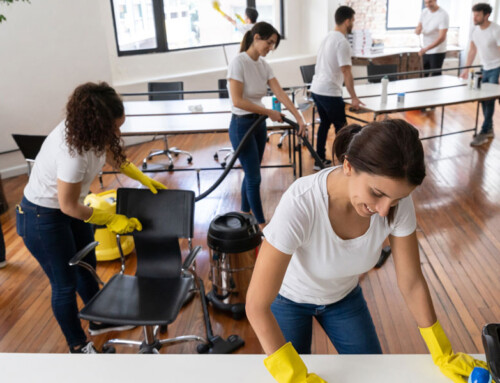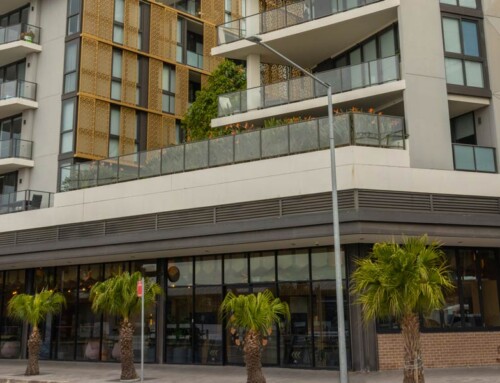Welcome Back!
As businesses start to reopen following the COVID-19 pandemic shutdown, the need to reassure facility workers and visitors that they are safe reigns paramount. This reassurance takes two forms: First are the physical actions you must take to provide the cleanest, healthiest environment possible. Second is the need to communicate this message to your workers and visitors. Let’s look at how best to accomplish these two goals.
Health first
The first way to reassure occupants your building is safe is to take the necessary steps to provide a healthy environment. This means that in addition to your normal, daily cleaning routine you need to:
- Disinfect touchpoints throughout the day using a disinfectant approved by the U.S. Environmental Protection Agency (EPA) or Health Canada to be effective against SARS CoV-2, the virus that causes COVID-19.
- Post highly visible reminders to wash hands for a minimum of 20 seconds, especially in all restrooms and food-related areas.
- Provide and/or recommend employees keep hand sanitizer nearby to use when soap and water is not available as well as disinfecting wipes for phones, keyboards, and other electronics.
- Investigate robotics, electrostatic sprayers and other emerging technologies that can lower costs while raising the bar in cleaning, disinfecting and infection prevention.
Social distancing. Rearrange workspaces and public areas in buildings to the minimum six feet of separation required for social distancing. Reduce the number of available chairs in lunch, break, meeting, and other gathering rooms and prominently post occupancy-limit signage at the entrances. Remind workers that they can still gather around the coffee machine, they just need to stay six feet apart.
Masks. The U.S. Centers for Disease Control and Prevention (CDC) and others recommend wearing a mask in public. Request that workers and visitors wear masks inside your facility and provide them to those who do not already have one. Mask-wearing can feel awkward. Holding a contest for the prettiest, ugliest, or most imaginative mask can add a bit of fun and help workers adapt to what for the foreseeable future is the new norm.
Temperature screening. To screen or not to screen is a question facing most employers. Some believe it is necessary, some not, and some are in favor of screening critical infrastructure workers only. If you decide to screen, establish a written policy and process that addresses vital questions, such as:
- Who will be screened? (Be sure the policy is nondiscriminatory.)
- Who will take temperatures? (Will employees take their own and report it or will the task be handled by HR or a third-party?)
- What type of thermometer will be used (oral with disposable tips, forehead contact, infrared, etc.)?
- What federal, state, or local legalities may need to be addressed? (U.S. Occupational Safety and Health Administration (OSHA) requires employers to conduct a potential risk-factor and hazard assessment for any screening process, for example.)
Testing. This is another all, some or none decision to be made. On April 23, the U.S. Equal Employment Opportunity Commission (EEOC) announced that employers may test employees for COVID-19 prior to entering the workplace “because an individual with the virus will pose a direct threat to the health of others.” While testing can help increase confidence levels within the workplace, it is important to keep in mind the potential for false positive/negative results as well as the fact that the test results apply only to the time of testing and does not mean the employee will remain COVID-19 free.
If testing is desired, here, again, you must make sure certain criteria are met, including making sure:
- Testing is nondiscriminatory.
- Records are confidential.
- Testing is done for COVID-19 only.
- The actions to be taken if an employee tests positive are established and clearly communicated.
- What consequences, if any, are there for employees who refuse to be tested.
Sick days. While many employers say they don’t want employees who are sick to come to work, the truth is many workplaces foster a culture that does not support this philosophy as evidenced by sick days resulting in pay reductions, lost vacation time and even overlooked promotions. Those days are over. Workers must be encouraged to stay home when they aren’t feeling well without fear of negative consequences. For many companies, this may be a difficult shift in thinking, but one that must be made. Depending on the level of illness, employees can be encouraged to work from home or allowed to make up for lost time and/or work at a later date, but these offers should be made without instilling fear of retribution if these options are not feasible.
Actions Speak Loudest
When it comes to communicating your message of safety, you can promote your efforts on your website and in your social media posts, newsletters, email taglines and other forms of internal and external correspondence. Yet by following the above suggestions, your employees and visitors will see first-hand that your commitment to providing them with a clean, healthy environment is far more than just words on a page.

















